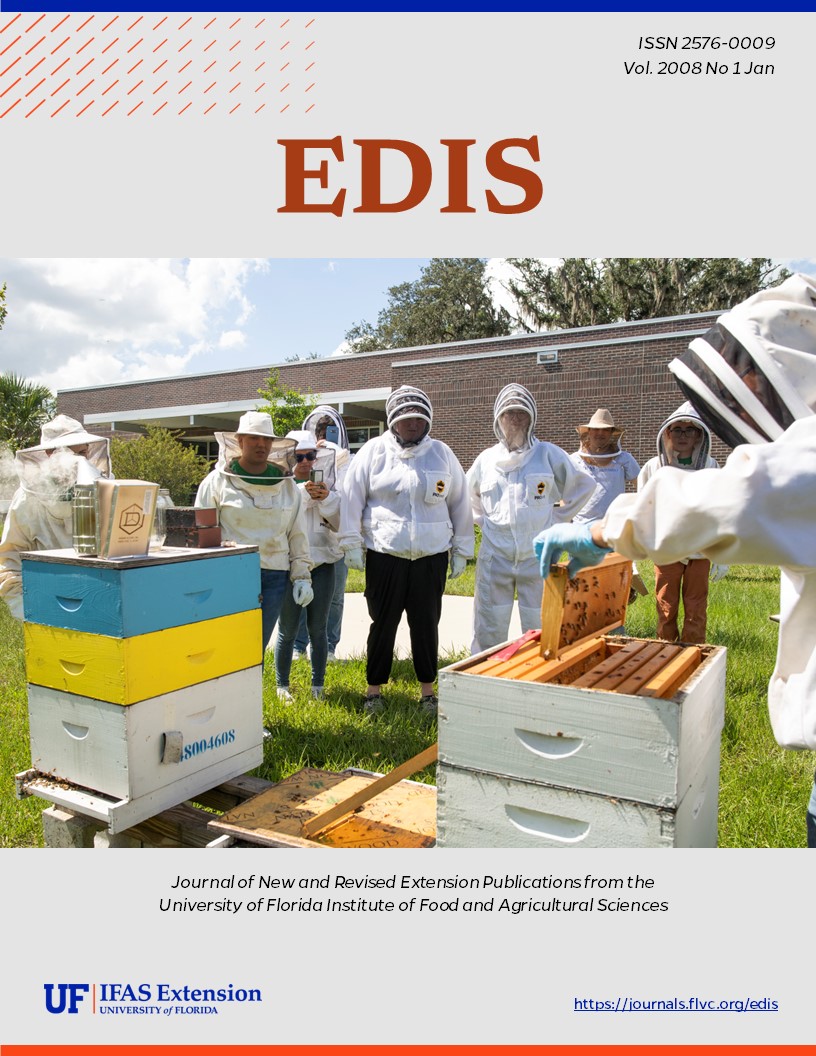Abstract
FCS-2282, a 6-page fact sheet by Lynda Spence and Heidi Liss Radunovich, speaks to the importance of children developing intergenerational relationships with older adults. Such relationships can have great benefits for both groups. Includes suggestions for activities for children and elders to do together and an extensive reading list. Published by the UF Department of Family, Youth and Community Sciences, November 2007.
References
Bales, S. S., Eklund, S. J., & Siffin, C. F. (2000). Children's perceptions of elders before and after a school-based intergenerational program. Educational Gerontology, 26, 677-689. https://doi.org/10.1080/03601270050200662
Bennett, R. (1976). Attitudes of the young toward the old: A review of research. Personnel and Guidance Journal, 55, 136-139. https://doi.org/10.1002/j.2164-4918.1976.tb04435.x
Berk, L. E. (Ed.) (2003). Child development.Boston: A & B.
Blunk, E. M., & Williams, S. W. (1997). The effects of curriculum on preschool children's perceptions of the elderly. Educational Gerontology, 23, 233-241. https://doi.org/10.1080/0360127970230303
Bronfrenbrenner, U. (1987). Nobody home: The erosion of the American family. Psychology Today, 10, 40-47. https://doi.org/10.1177/107621758701000216
Erikson, E. H., Erikson, J. M. & Kivnick, H. Q. (1986). Vital involvement in old age. W.W. New York: Norton & Co. Inc.
Hickey, L. A., Hickey, T., & Tallish, R. A. (1968). Young people's perceptions of the elderly. Journal of Genetic Psychology, 112, 227-235. https://doi.org/10.1080/00221325.1968.10533797
Ingoldsby, B. B., Smith, S. R., & Miller, J. E. (2004). Exploring family theories. Los Angeles: Roxbury.
Issacs, L. W., & Bearison, D. J. (1986). The development of children's prejudices against the aged. International Journal of Aging and Human Development, 23, 175-194. https://doi.org/10.2190/8GVR-XJQY-LFTH-E0A1
Miller, S. M., Blaloc, J., & Ginsberg, H. J. (1985). Children and the ages: Attitude, contact and discriminative ability. International Journal of Ageing and Human Development, 19, 47-53. https://doi.org/10.2190/HRA5-PJJR-KKLR-D3PC
National Association for the Education of the Young (1997). Young and old together.KidSource Online. Retrieved April 10, 2007, from http://www.kidsource.com/parenting/young.old.html
U. S. Census Bureau (2005). U.S. population projections for selected age groups by state: 2005 - 2030. Retrieved April 10, 2007, from http://www.aoa.gov/prof/Statistics/future_growth/State-5-yr-age-projections-2005-2030.pdf
U.S. Department of Health and Human Services Administration on Aging. (2006). A statistical profile of older Americans aged 65+. Retrieved April 10, 2007, from http://www.aoa.gov/PRESS/fact/pdf/Attachment_1304.pdf
U.S. Department of Health and Human Services Administration on Aging. (1990). Aging into the 21st century. Retrieved April 10, 2007, from http://www.aoa.gov/prof/Statistics/future_growth/aging21/program.asp

